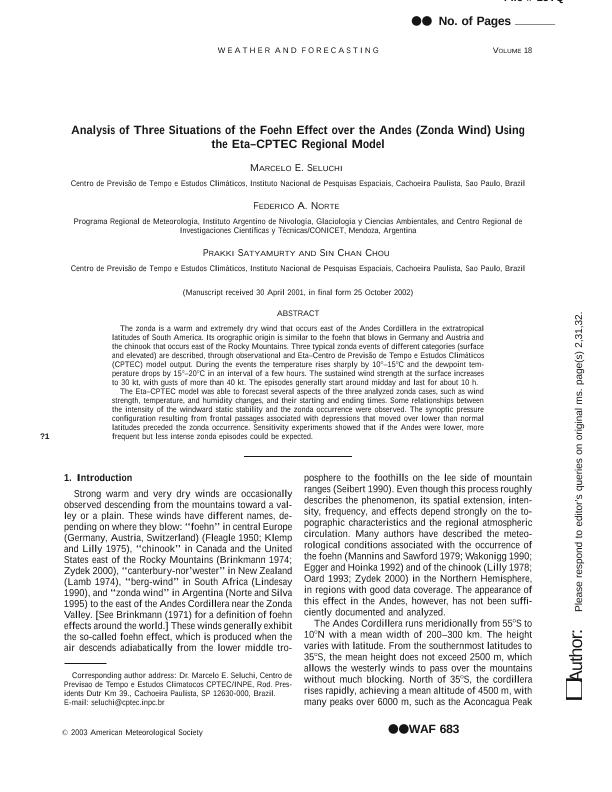Artículo
Analysis of Three Situations of the Foehn Effect over the Andes (Zonda Wind) Using the Eta–CPTEC Regional Model
Fecha de publicación:
06/2003
Editorial:
American Meteorological Society
Revista:
Weather And Forecasting
ISSN:
0882-8156
e-ISSN:
1520-0434
Idioma:
Inglés
Tipo de recurso:
Artículo publicado
Clasificación temática:
Resumen
The zonda is a warm and extremely dry wind that occurs east of the Andes Cordillera in the extratropical latitudes of South America. Its orographic origin is similar to the foehn that blows in Germany and Austria and the chinook that occurs east of the Rocky Mountains. Three typical zonda events of different categories (surface and elevated) are described, through observational and Eta–Centro de Previsa˜o de Tempo e Estudos Clima´ticos (CPTEC) model output. During the events the temperature rises sharply by 108–158C and the dewpoint temperature drops by 158–208C in an interval of a few hours. The sustained wind strength at the surface increases to 30 kt, with gusts of more than 40 kt. The episodes generally start around midday and last for about 10 h. The Eta–CPTEC model was able to forecast several aspects of the three analyzed zonda cases, such as wind strength, temperature, and humidity changes, and their starting and ending times. Some relationships between the intensity of the windward static stability and the zonda occurrence were observed. The synoptic pressure configuration resulting from frontal passages associated with depressions that moved over lower than normal latitudes preceded the zonda occurrence. Sensitivity experiments showed that if the Andes were lower, more frequent but less intense zonda episodes could be expected.
Palabras clave:
Foehn Effect
,
Viento Zonda
Archivos asociados
Licencia
Identificadores
Colecciones
Articulos(IANIGLA)
Articulos de INST. ARG. DE NIVOLOGIA, GLACIOLOGIA Y CS. AMBIENT
Articulos de INST. ARG. DE NIVOLOGIA, GLACIOLOGIA Y CS. AMBIENT
Citación
Seluchi, Marcelo Enrique; Norte, Federico Augusto; Satyamurty, Prakki; Chou, Sin Chan; Analysis of Three Situations of the Foehn Effect over the Andes (Zonda Wind) Using the Eta–CPTEC Regional Model; American Meteorological Society; Weather And Forecasting; 18; 3; 6-2003; 481-501
Compartir
Altmétricas




